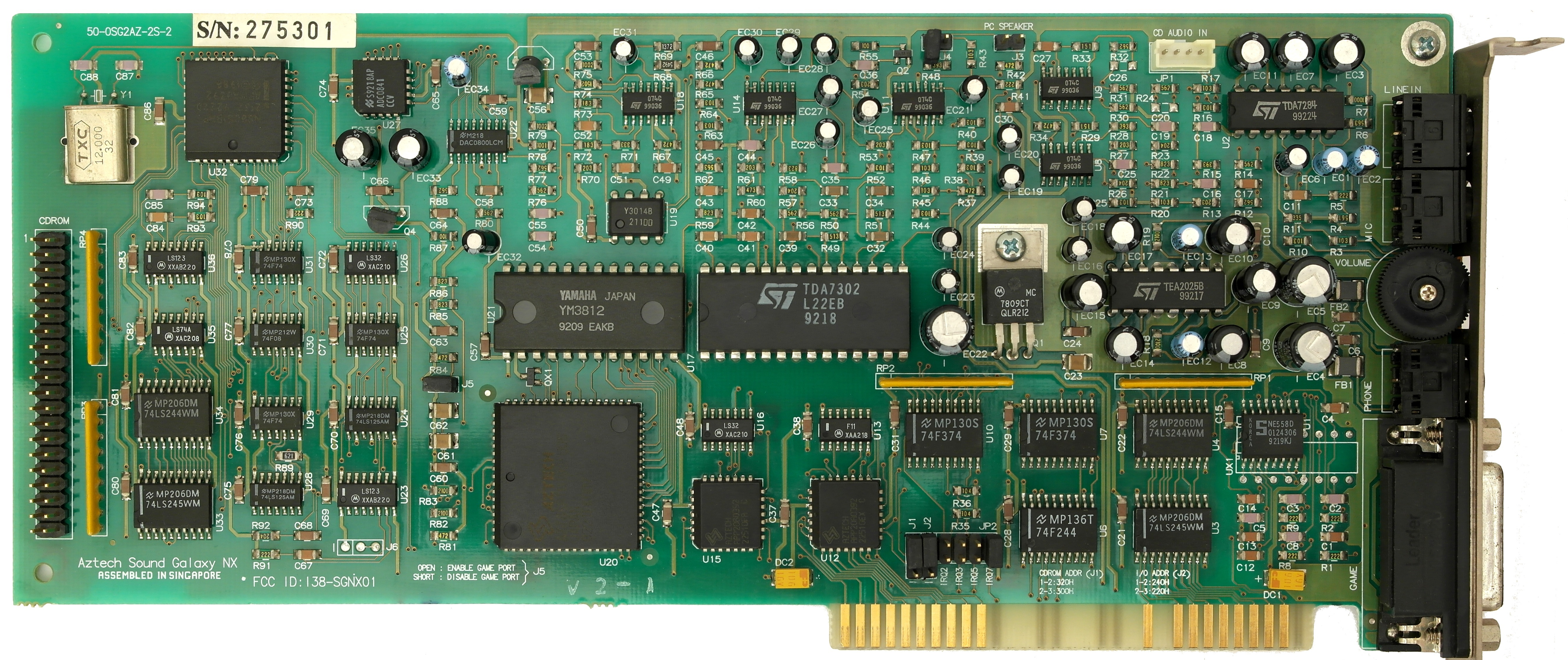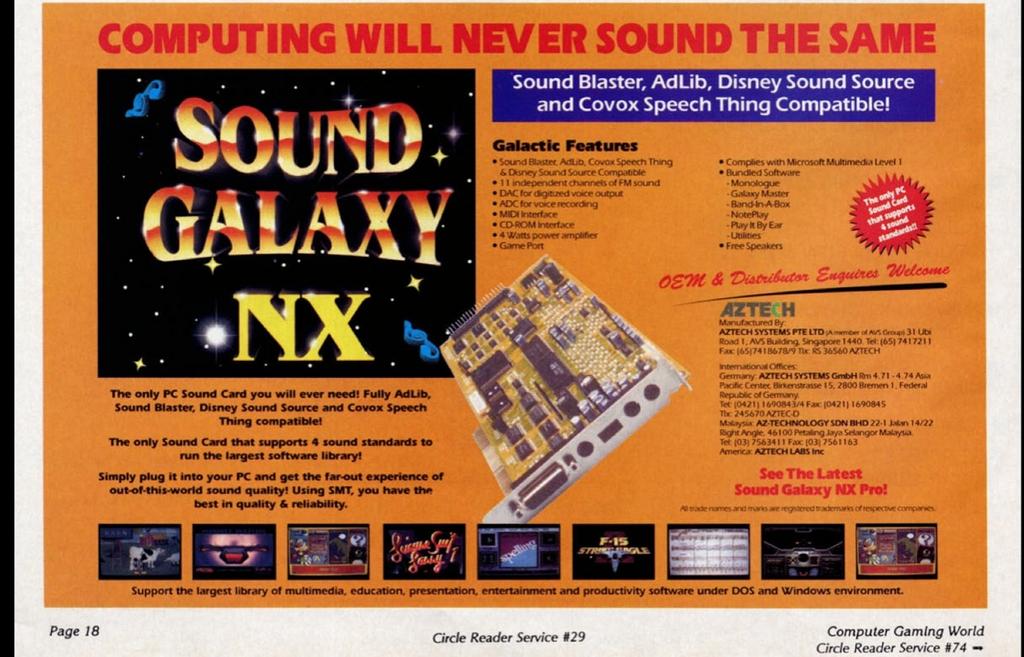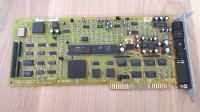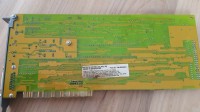Aztech Sound Galaxy NX
Launched alongside their first sound card (Sound Galaxy BX) was the Sound Galaxy NX, released in March 1992. This was their 'premium' offering.
|
Released | March 1992 |
| Bus | ISA 8-bit | |
| FM Synth | Yamaha YM3812 (OPL2) | |
| Chipset | AZTSSPT0192-U05 (pre-1st generation) | |
| Standards | Ad Lib, Sound Blaster 2.0, Covox Speech Thing, Disney Sound Source | |
| Ports | Speaker-Out, Mic-In, Line-In, thumbwheel volume control Game port |
|
| CD-ROM | IDE | |
| Wavetable | None | |
| Plug & Play | No | |
| FCC ID(s) | I38-SGNX01 | |
| Price | Nov 1992: $149 | |
| See Also | Sound Galaxy BX, Sound Galaxy BX II, Sound Galaxy NX |
The Sound Galaxy NX added several niceties over the more budget-oriented Sound Galaxy BX, including an IDE CD-ROM interface and two more sound standards: Covox Speech Thing and Disney Sound Source. The SGNX is a typical case of quantity over quality, being advertised for having support for more sound standards (half of which were barely used by any games) instead of higher quality output on the best sound standards it supported - Ad Lib and Sound Blaster.
Like the Sound Blaster, the NX supported digital audio playback at 22 KHz in mono, and recording at 12 KHz in mono. The backplate contains the following (from top): Line-In, Mic-In, thumbwheel volume control, Speaker-Out, Game/MIDI port.
The Sound Galaxy NX was succeeded by the Sound Galaxy NX II the following year, which added 'Auto Init' configuration (a pre-Plug & Play method of setting some of the card's configuration via software).
Board Revisions
Several board revisions are known to exist:
Version 1.0 (FCC ID: I38-SGBX21) got the YM3812 in a DIP-24 package. The CD-Audio header was positioned just behind the Mic-In port on the right side of the card.
Version 1.1 (FCC ID: KRNKTL-3180) was the version sold by KTL as the KTL-3180. This had the CD-Audio header moved to the top-left of the card.
Version 2.2 (FCC ID: I38-SGBX21) got the smaller 24-pin SOP version of the Yamaha YM3812.
Version
2.3A (FCC ID: I38-SGBX21) got the smaller 24-pin SOP version of the Yamaha YM3812. Both green and brown silkscreen versions are known to exist for this version.
All versions had pin headers on the card for CD-Audio and Speaker-Out. Sadly, no line-out to circumvent the amplifier (and the associated noise that invariably comes with it).
Competition
At its time of release, Creative Labs were already onto their second generation, with the original Sound Blaster having arrived about 2 years prior, and the Sound Blaster Pro about 6 months before the Sound Galaxy NX. Even the Sound Blaster Pro II had launched a few months before, making use of the new Yamaha YMF262 single stereo chip. It is therefore apparent that Aztech's business model was simply to compete at a lower price point than Creative, probably targeting PC-compatible OEMs with discounts on bulk orders.
In the Media
Setting it Up
The Sound Galaxy NX's settings are configured via a jumper block near the bottom-right of the card:
| Jumper | Purpose | Available Settings |
| J1 | I/O Base Address | 1-2 = 240h, 2-3 = 220h (default) |
| J2 | Game Port Enabled/Disabled | 1-2 = enabled (default), 2-3 = disabled |
| JP1 | IRQ | Left two pins (top and bottom) = IRQ2 Second row (top and bottom) = IRQ3 Third row (top and bottom) = IRQ5 Right two pins (top and bottom) = IRQ7 (default) |
Trying to locate the Sound Galaxy NX installation disks has proven extremely difficult. Aztech installation routines tend to be very particular and will only install if the actual card the drivers were designed for is present.
Downloads
Operation Manual Get in touch if you can provide this missing item! |
NX Install Disks Get in touch if you can provide this missing item! |
|



